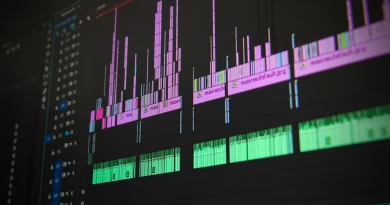WWDC 2025 Wrap-Up: Did Apple Finally Fix Siri with a True On-Device AI?
For years, it’s been the elephant in the room at every Apple keynote. While Google, Microsoft, and OpenAI were dazzling the world with generative AI, Apple’s own intelligent assistant, Siri, had become a punchline. Once a revolutionary concept, Siri had stagnated into a clumsy and frustratingly limited tool, capable of setting timers but often failing at basic conversational requests.
Going into this year’s Worldwide Developers Conference (WWDC), the pressure on Apple was immense. They had to prove they weren’t being left behind in the AI race. The entire tech world was asking one single, critical question: would this be the year Apple finally fixes Siri?
After a packed week of announcements, we have our answer. Apple didn’t just “fix” Siri. They completely reimagined it from the ground up, embedding it into the core of their new operating systems under a new brand: “Apple Intelligence.”
What’s Actually New? The On-Device Revolution
The keynote demonstrated a fundamental shift in Apple’s approach. This new, smarter Siri is not just a cloud-based voice assistant; it’s a proactive intelligence layer that lives on your device.
Here are the key breakthroughs that were unveiled:
1. A Hardcore Focus on On-Device Processing: This is Apple’s signature move and its biggest differentiator. While competitors process most AI requests on massive server farms, Apple announced that the vast majority of “Apple Intelligence” tasks will be handled directly on the new chips in the latest iPhones and Macs. This is a monumental win for privacy. It means your personal data—your emails, your messages, your photos—isn’t being sent to the cloud to be analyzed. Apple is betting that, for personal tasks, users will value privacy over raw power.
2. Deep App Integration and Context Awareness: The new Siri finally understands what you’re doing. The demos were impressive. A user viewing a photo could say, “Send this to Mom and tell her it was great seeing her last week,” and Siri would understand who “Mom” is, find the photo, open Messages, and draft the text, all in one seamless action. Another demo showed a user asking, “When is my flight?” and Siri, with permission, could find the confirmation email in Mail and display the relevant information. This ability to understand on-screen context and take actions across different apps is the leap in usability we’ve been waiting for.
3. Natural, Conversational Flow: The stilted, command-and-response nature of the old Siri is gone. Apple demonstrated a more fluid conversational ability. You can now ask follow-up questions without repeating the entire context. For example, after asking for nearby Italian restaurants, you could follow up with, “How about ones that are open now and have outdoor seating?” and Siri would remember the original query and refine the results.
The Verdict: Is It Really Fixed?
So, did Apple do it? Yes, but with some very “Apple” caveats.
- The Good: This is, without a doubt, the biggest upgrade to Siri since its inception. The focus on on-device processing and privacy is a masterstroke that will resonate deeply with Apple’s user base. The deep integration across the OS makes it feel less like a separate app and more like a true, helpful extension of the user’s own intent. For everyday, practical tasks, Siri is now a genuine contender.
- The Caveats: Apple is still playing catch-up in the realm of pure generative AI. The new Siri is unlikely to write a sonnet or a complex piece of code with the same creative flair as the latest models from OpenAI or Google. Furthermore, Apple made it clear that the most advanced on-device features will require their latest and most powerful chips, effectively creating a hardware paywall for true “Apple Intelligence.”
Ultimately, WWDC 2025 will be remembered as the year Apple finally brought its AI strategy into focus. They chose not to compete head-to-head in the “my AI is bigger than your AI” cloud wars. Instead, they played their own game, focusing on privacy, on-device power, and seamless integration. They didn’t just fix Siri; they gave it a whole new purpose.




